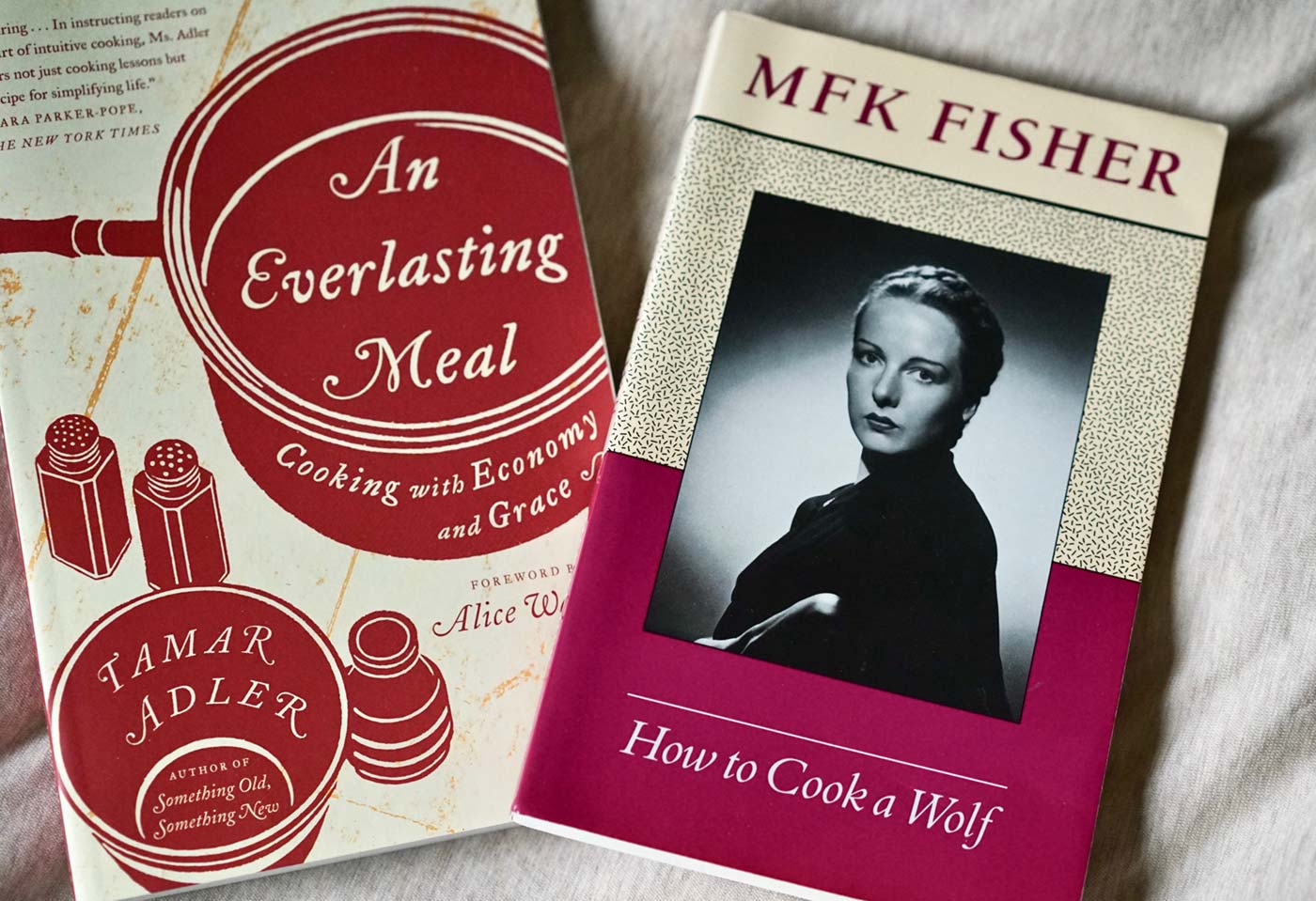How to Eat Affordably, Responsibly and Well in the New Year
In 1942, renowned food writer M.F.K. Fisher wrote the seminal book How to Cook a Wolf, a biting and intelligent wartime guide for citizens hampered by food shortages—the proverbial “wolf at the door.” She taught readers to cook with gusto, even with limited rations, and stressed the importance of eating well, even—or especially—in times of hardship.
In 2009, chef and food writer Tamar Adler began writing An Everlasting Meal: Cooking with Economy and Grace. Modeled on Fisher’s publication generations earlier, Adler’s book served as a rallying cry for home cooks to create delicious meals economically, especially at a time when the U.S. was recovering from the 2007–09 financial recession.
Neither book is a cookbook as we might be familiar with, each focusing less on teaspoons and tablespoons and more on sensibility and philosophy—things particularly consoling amidst a global pandemic in 2020.
At the start of the pandemic, I revisited both of these books. It felt necessary to turn to my own cupboards and understand how to make meals stretch further without waste, especially when the days of popping out for just a few ingredients were no longer. Some of the tips these writers imparted to me through their prose stood out and warrant sharing as we look toward the new year.
TURN SCRAPS INTO NEW BEGINNINGS
In March, I started looking more closely at my scraps. The peels of carrots, the skins of onions, the leafy tops of celery. I didn’t have anywhere to compost, so what could I do with them instead?
In Adler’s book, the chapter “How to Catch Your Tail” teaches how to gracefully and responsibly turn scraps that would otherwise be discarded into the perfect beginnings of another meal. Skins and tops of onions become hearty soups; leftover bones or vegetables create stocks full of depth; orange peels transform into sweet marmalades for lathering on toasted bread.
When it comes to “liquid” scraps, such as cooking water or juices from fruits, Fisher’s advice is equally marvelous and involves leftover gin bottles:
“It is best to keep it in an old gin bottle in the icebox, alongside the other old gin bottle filled with juices left from canned fruit. You can add what’s left of the morning tomato juice. You can squeeze in the last few drops of the lemon you drink in hot water before breakfast, if you still do that. You can put canned vegetable juices in. You can steep parsley stems in hot water and pour their juice into the bottle. In other words, never throw away any vegetable or its leaves or its juices unless they are bad; else count yourself a fool.”
Fisher considered these gin-bottle juices a “veritable treasure jug for vitamins and minerals,” ideal for adding to soups or any manner of cooking. She even urged readers to try a glassful of it sometime. As for me, I think I’ll just stick to its cooking application for now.
EMBRACING LEFTOVERS
Both authors reframe leftovers from the foods brought home from restaurants into a beautifully integrative process that flows from meal to meal.
In her chapter “How to Stride Ahead,” Adler details her ritual of cooking, roasting and boiling a week’s worth of vegetables and meats, and how she effortlessly topples each like dominoes into meals throughout the week. (Roasted vegetables are best when they “have a few days to settle into themselves,” she reminds readers.)
Both Adler and Fisher extol the virtue of filling the oven whenever it’s turned on. This is how Adler completes a week’s worth of cooking efficiently, whereas Fisher reminds urges the readers to place foods such as sliced apples alongside whatever else is being cooked in the oven, either for dessert later or on buttered toast the next morning. If you’re going to heat the oven, why not use it to make more meals?
BALANCE THE DAY
As the pandemic brought disruptions to daily life, mealtimes became less dictated by working hours and more by whenever they could be fit in. In How to Cook a Wolf, when it comes to mealtimes, Fisher advises: “Balance the day, not each meal in the day.”
She says, “Breakfast can just be toast. It can be piles of toast, generously buttered, and a bowl of honey or jam. You can be lavish, because the meal is so inexpensive. You can have fun, because there is no trotting around with fried eggs and mussy dishes.”
The rest of the day can then be balanced with vegetables (like the ones you’ve already roasted) or hearty soups made from the stock of those vegetable scraps. There’s no need to stress about balanced meals.
LOOKING TO THE NEW YEAR
When it comes to making meals last longer and being more resourceful with our food—especially in times of uncertainty—these books are gentle reminders that it’s not necessary to reinvent the wheel. All the ideas we need are there in the words of the people who came before us.
As we turn the calendar page to 2021, perhaps we can take the metaphorical scraps we’ve gathered this year—like how to make sourdough bread or grow our own herbs—and let them carry us into the beginning of a new, perhaps more hopeful, year ahead. And if you ever need a little inspiration or guidance, Adler and Fisher can be your reassuring companions at the stove too, just like they were for me.





